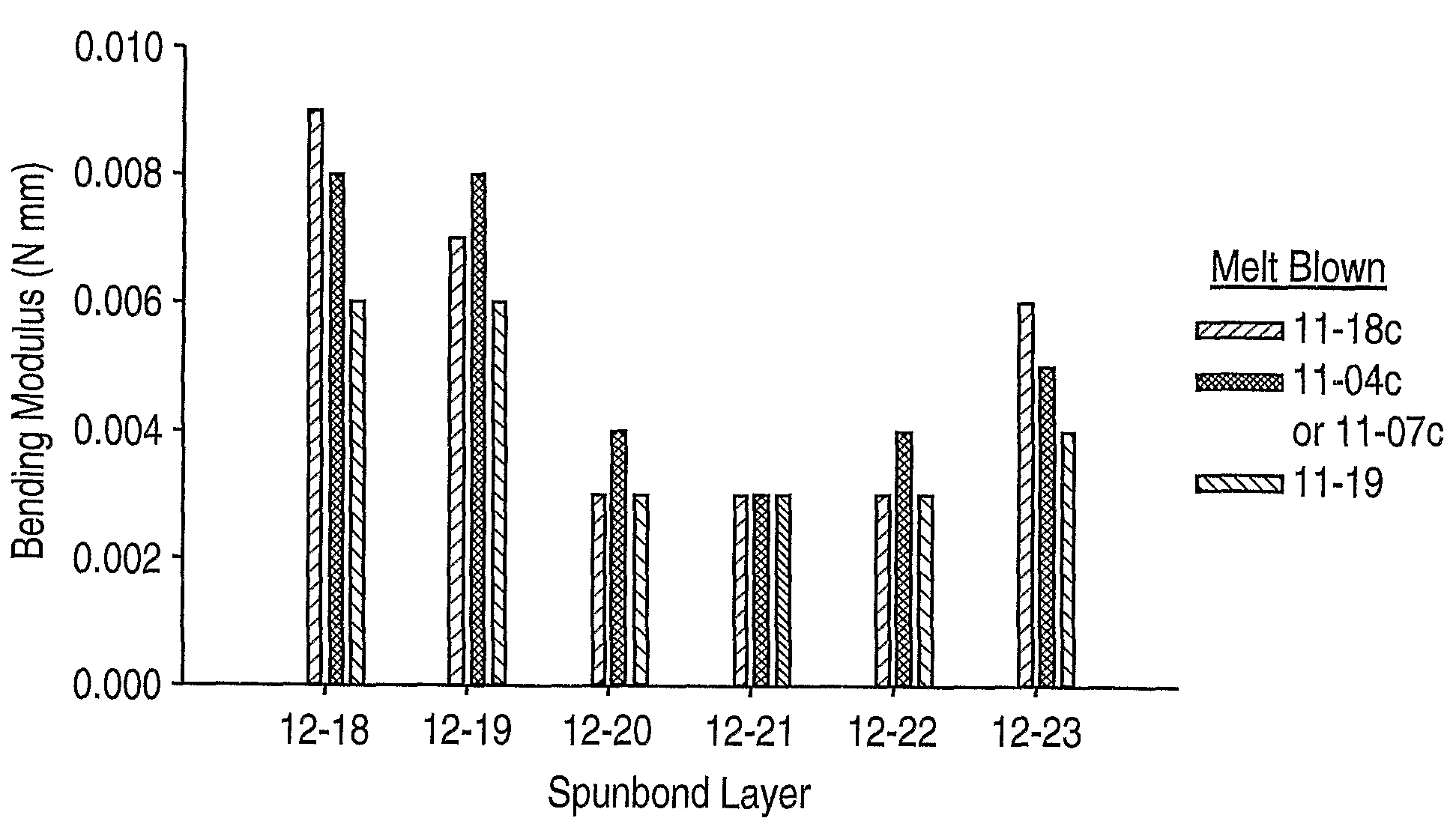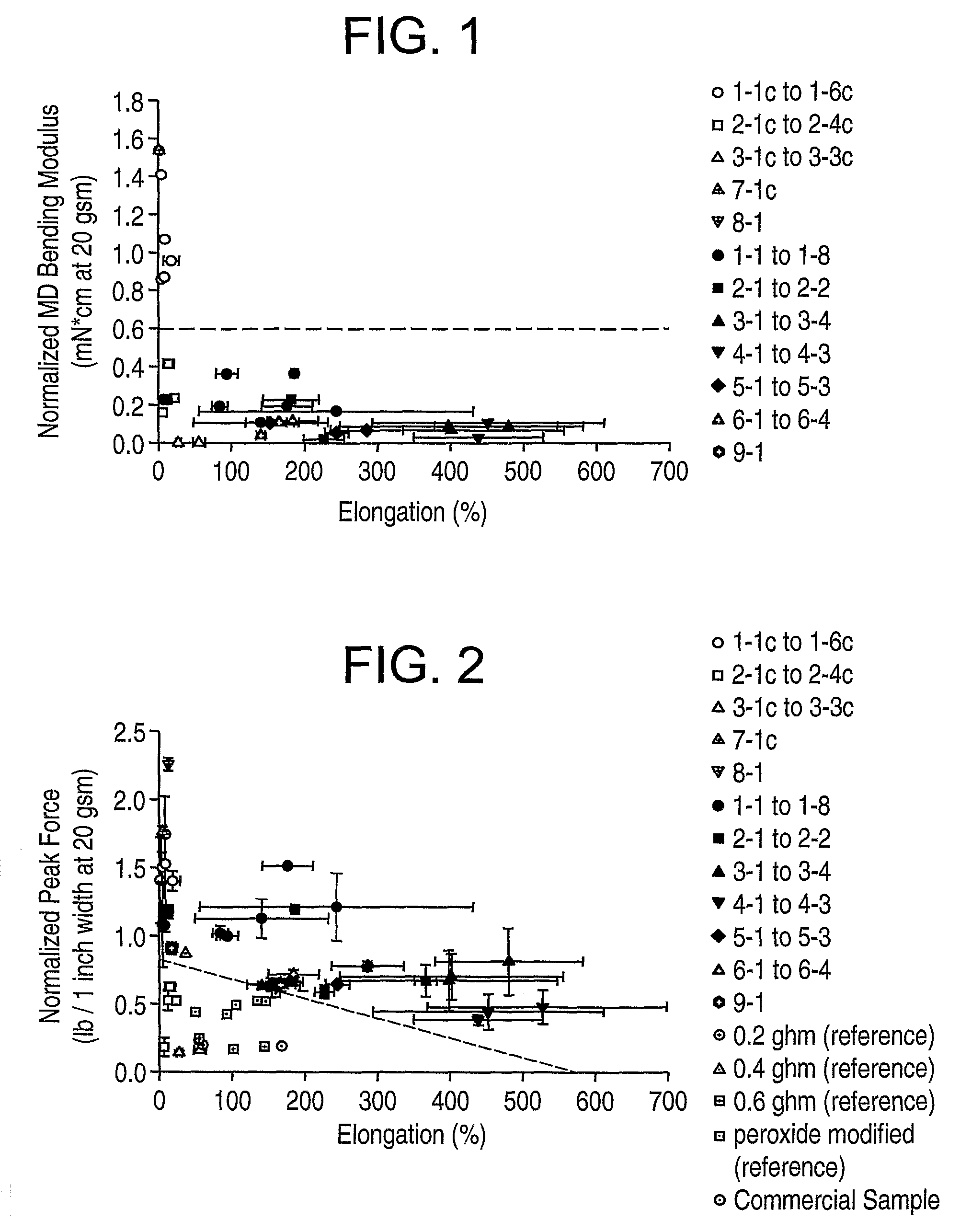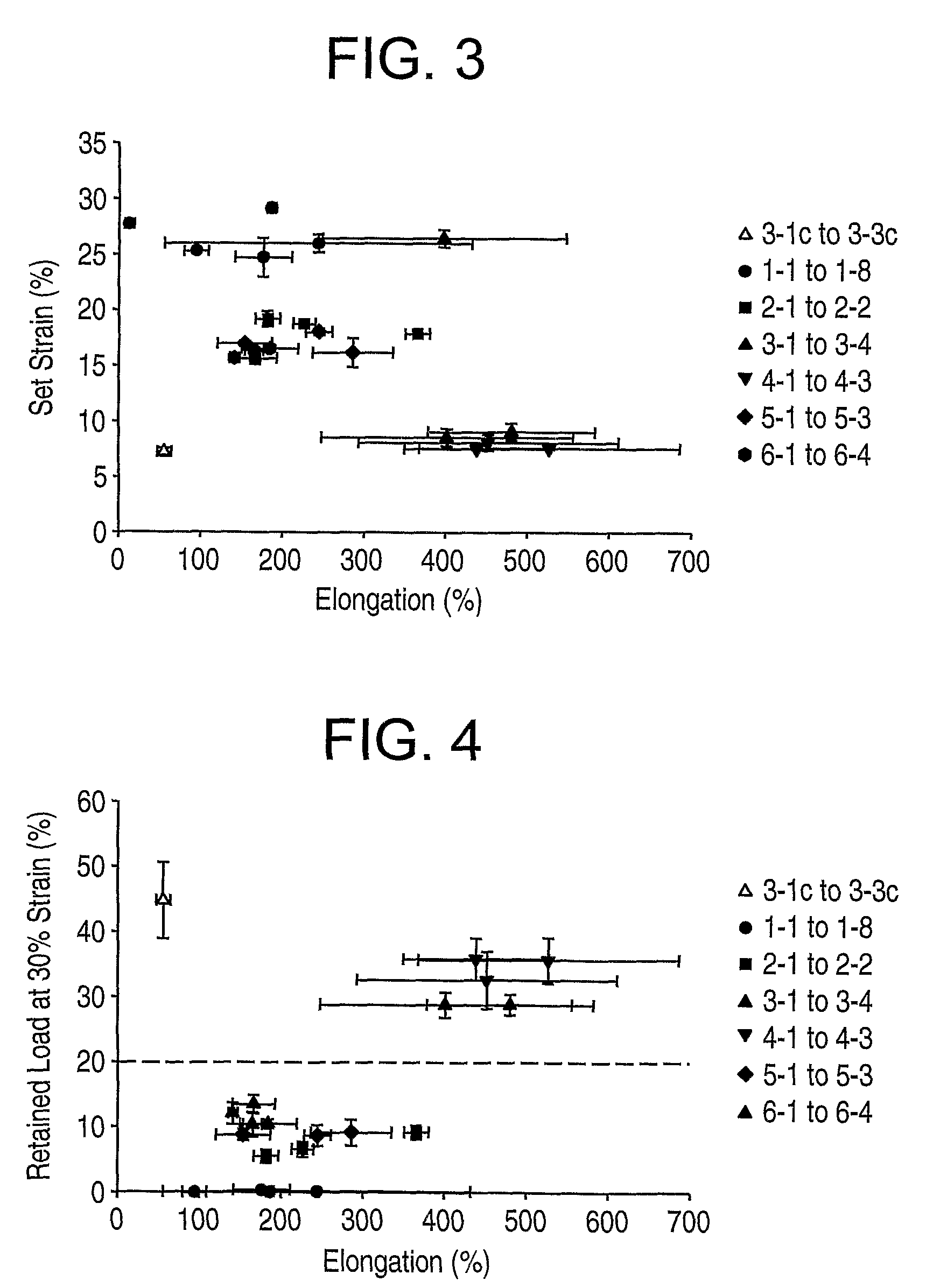Propylene Based Meltblown Nonwoven Layers and Composite Structures
a non-woven layer, meltblown technology, applied in the direction of layered products, weaving, bandages, etc., can solve the problems of poor elasticity and softness of hpp fabrics, poor fit, poor elasticity of hpp fabrics, etc., to achieve high strength, softness, and abrasion resistance
- Summary
- Abstract
- Description
- Claims
- Application Information
AI Technical Summary
Benefits of technology
Problems solved by technology
Method used
Image
Examples
specific embodiments
[0104]The effect of spinning conditions was examined for polymers with 25-38 MFR. Elongational stresses achieved by controlling throughput and take-off rate determined the amount of stress-induced crystallinity in the fiber and hence the resulting mechanical properties. Higher elongational stresses achieved at a draw down greater than 1000 resulted in higher crystallinity and hence more rigid fibers. More elasticity was preserved at lower crystallinity or draw down less than 1000. For more elastic fiber, very low crystallinity or draw down less than 500 was preferred. To verify that elasticity was maintained, the tensile hysteresis behavior was measured.
[0105]The different resins used are presented in Tables 1 and 2. The process conditions used to synthesize the propylene-ethylene resins A, B, C, and D are shown in Table 1.
TABLE 1PROPYLENE-ETHYLENE RESIN PROCESS CONDITIONSPOLYPOLYPOLYSOLVC3C2H2MONOMCONTRLCATMTLVISC.DENSPRODFLOWFLOWFLOWFLOWCONVTEMPEFF.ResinCPOISEG / CCLB / HRLB / HRPPHPPHS...
PUM
| Property | Measurement | Unit |
|---|---|---|
| elongation | aaaaa | aaaaa |
| elongation | aaaaa | aaaaa |
| diameter | aaaaa | aaaaa |
Abstract
Description
Claims
Application Information
 Login to View More
Login to View More - R&D
- Intellectual Property
- Life Sciences
- Materials
- Tech Scout
- Unparalleled Data Quality
- Higher Quality Content
- 60% Fewer Hallucinations
Browse by: Latest US Patents, China's latest patents, Technical Efficacy Thesaurus, Application Domain, Technology Topic, Popular Technical Reports.
© 2025 PatSnap. All rights reserved.Legal|Privacy policy|Modern Slavery Act Transparency Statement|Sitemap|About US| Contact US: help@patsnap.com



